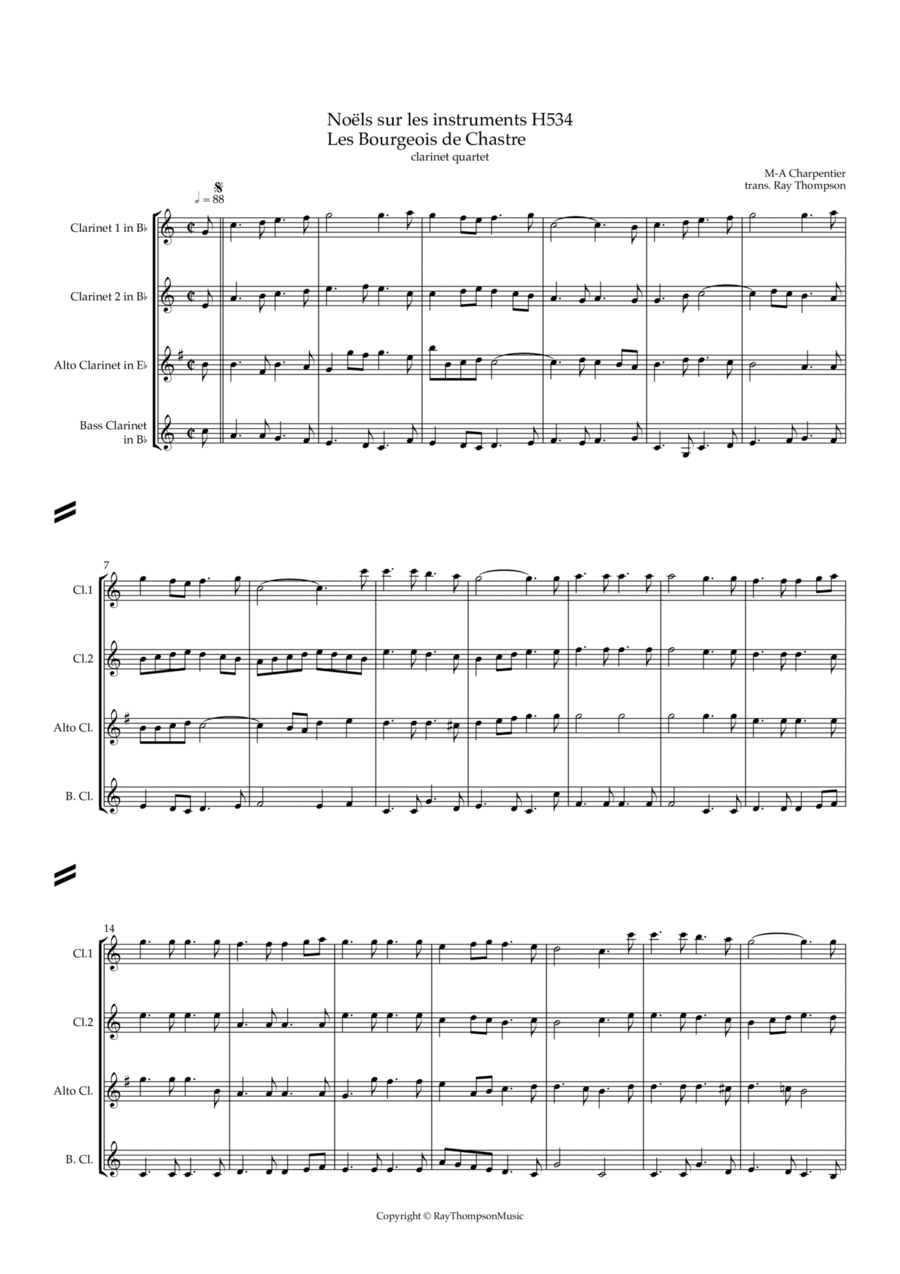Clarinet Quartet,Woodwind Ensemble Bass Clarinet - Level 4 - Digital Download SKU: A0.553942 Composed by Marc-Antoine Charpentier. Arranged by Ray Thompson. Baroque,Christmas,Renaissance. 29 pages. RayThompsonMusic #6287543. Published by RayThompsonMusic (A0.553942). Charpentier wrote a lot of music for Christmas: oratorios on Christmas themes, pastorals, noels, and a lovely Midnight Mass for Christmas.He arranged a lot of French Christmas Carols (Noels) as 2 suites _ Noels sur les instruments and Noels pour les instruments for a string orchestra and 2 flutes/recorders.This is my transcription of the Noëls sur les instruments for standard clarinet quartet. (2 Bb, alto and bass) (Alternative clt 3 in Bb provided for alto part)They are 6 pieces :Les Bourgeois de Chastre (The Townsfolk of Chastre) Où s'en vont ces gais bergers (Where have the merry shepherds gone?) Joseph est bien marié (Joseph is well married) Or nous dites Marie (But, tell us Mary) A la venue de Noël (With the coming of Christmas) Une jeune pucelle (A young virgin girl)This is purely the order they are shown in his manuscript.They appear in his Midnight Mass in the following order:(This follows the Christmas Story)Joseph est bien marié (Joseph is well married)Or nous dites Marie (But, tell us Mary)Une jeune pucelle (A young virgin girl)Les Bourgeois de Chastre (The Townsfolk of Chastre) Où s'en vont ces gais bergers (Where have the merry shepherds gone?)A la venue de Noël (With the coming of Christmas)
